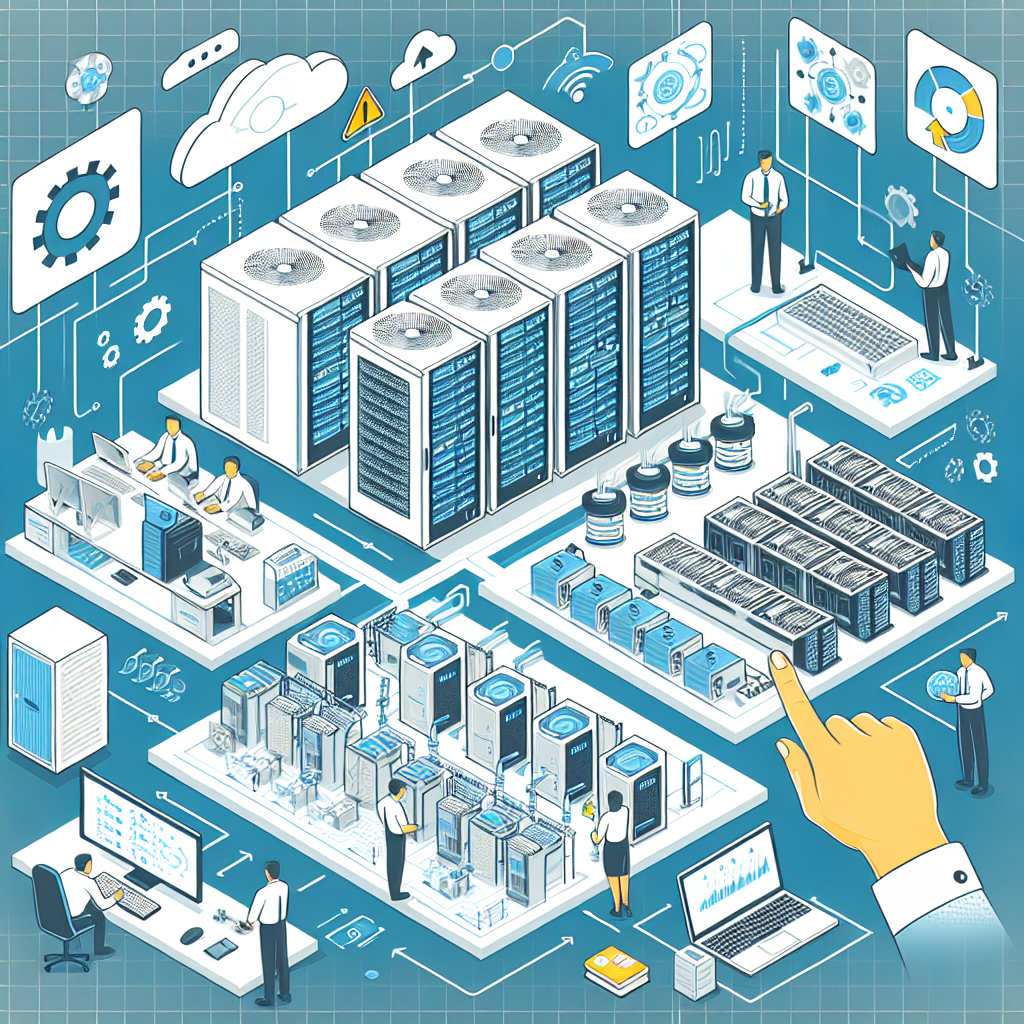Data centers are the backbone of modern businesses, housing the critical infrastructure that supports their operations. As such, it is essential for organizations to have a solid data center facilities management strategy in place to ensure the smooth and efficient functioning of their data center facilities. Implementing a successful data center facilities management strategy requires careful planning, attention to detail, and adherence to best practices. In this article, we will discuss some tips and best practices for implementing a successful data center facilities management strategy.
1. Conduct a comprehensive assessment of your data center facilities: Before implementing any changes or improvements to your data center facilities, it is crucial to conduct a thorough assessment of the current state of your data center. This assessment should include an evaluation of the physical infrastructure, power and cooling systems, security measures, and overall operational efficiency. By understanding the strengths and weaknesses of your data center facilities, you can develop a targeted strategy for improvement.
2. Develop a detailed facilities management plan: Once you have completed your assessment, it is important to develop a detailed facilities management plan that outlines the goals, objectives, and actions needed to optimize the performance of your data center facilities. This plan should include specific tasks, timelines, and responsibilities for each aspect of facilities management, such as maintenance, troubleshooting, and disaster recovery.
3. Implement proactive maintenance practices: Regular maintenance is essential for ensuring the reliability and efficiency of data center facilities. Implementing proactive maintenance practices, such as routine inspections, equipment testing, and predictive maintenance, can help prevent costly downtime and equipment failures. By staying ahead of potential issues, you can minimize the risk of disruptions to your data center operations.
4. Monitor and optimize power and cooling systems: Power and cooling systems are critical components of data center facilities, as they play a key role in maintaining the optimal operating conditions for servers and other equipment. Monitoring the performance of power and cooling systems, and optimizing their efficiency, can help reduce energy costs, improve reliability, and extend the lifespan of equipment. Implementing energy-saving measures, such as using efficient cooling technologies and implementing power management strategies, can also help reduce the environmental impact of data center operations.
5. Enhance data center security measures: Data center security is a top priority for organizations, as data breaches and cyber attacks can have devastating consequences. Implementing robust security measures, such as access controls, surveillance systems, and fire detection systems, can help protect sensitive data and prevent unauthorized access to data center facilities. Regular security audits and testing can also help identify vulnerabilities and ensure compliance with industry regulations.
6. Establish a disaster recovery plan: Despite the best efforts to prevent disruptions, data center facilities may still be vulnerable to unexpected events, such as natural disasters or equipment failures. Establishing a comprehensive disaster recovery plan that includes backup systems, data replication, and recovery procedures can help minimize downtime and ensure business continuity in the event of a disaster. Regular testing and updates of the disaster recovery plan are essential to ensure its effectiveness.
In conclusion, implementing a successful data center facilities management strategy requires a combination of careful planning, proactive maintenance practices, and adherence to best practices. By conducting a comprehensive assessment of your data center facilities, developing a detailed facilities management plan, and implementing proactive maintenance practices, you can optimize the performance and reliability of your data center facilities. Monitoring and optimizing power and cooling systems, enhancing security measures, and establishing a disaster recovery plan are also key components of a successful data center facilities management strategy. By following these tips and best practices, organizations can ensure the smooth and efficient functioning of their data center facilities, and support their business operations effectively.


Leave a Reply